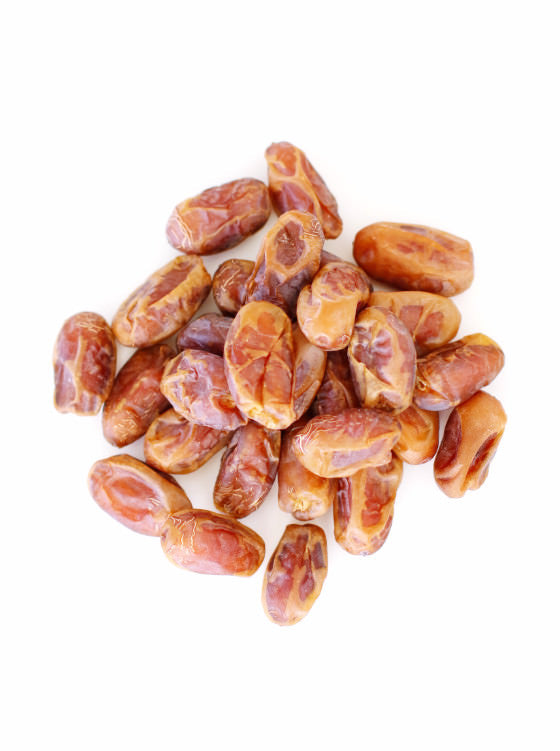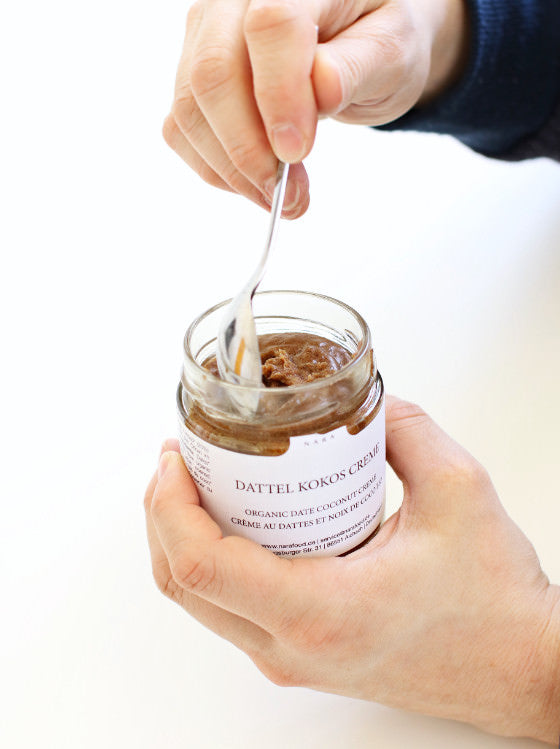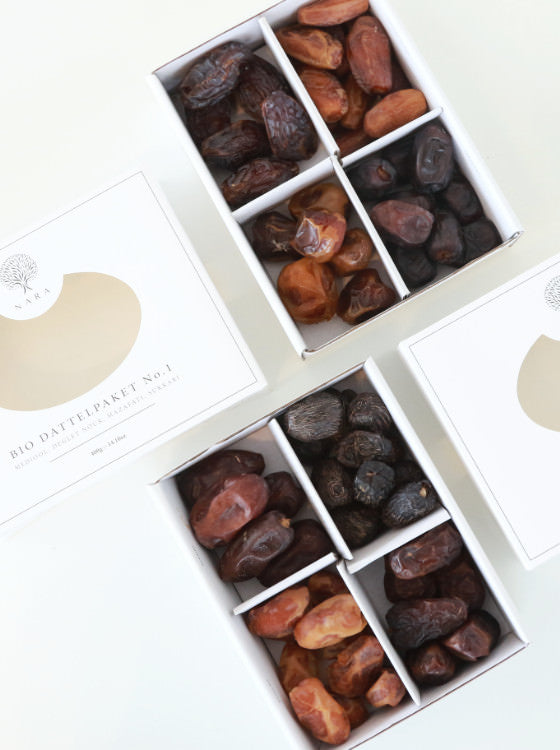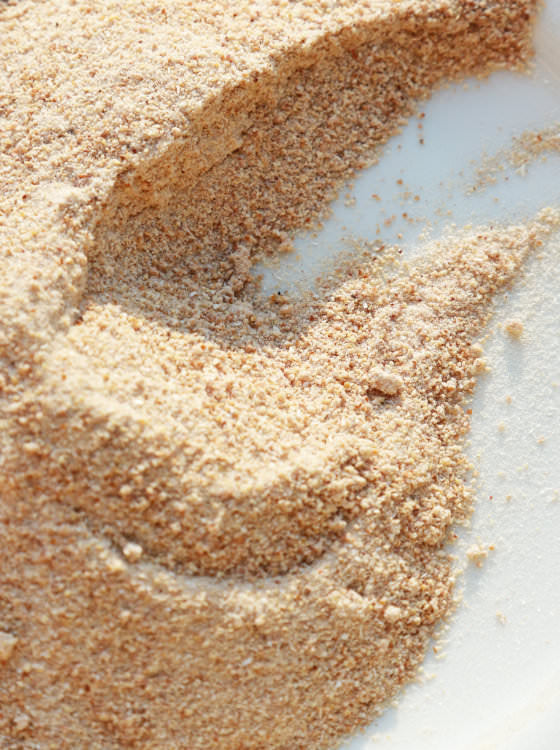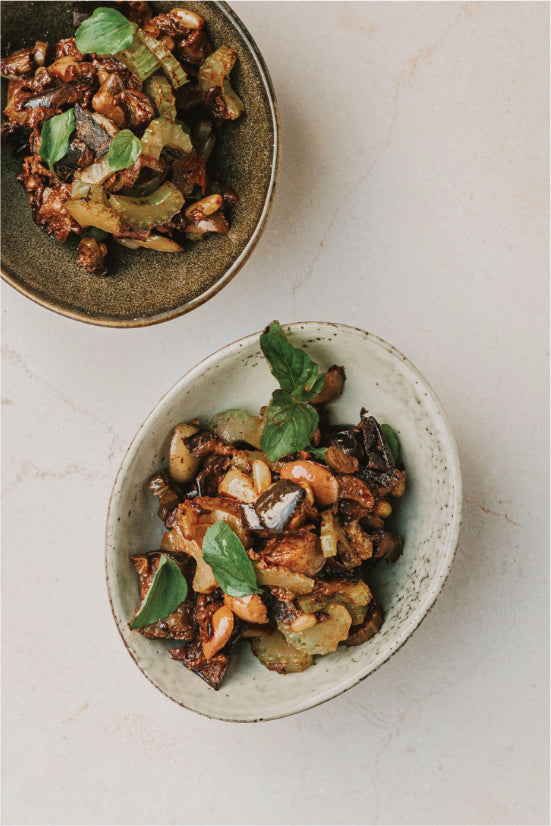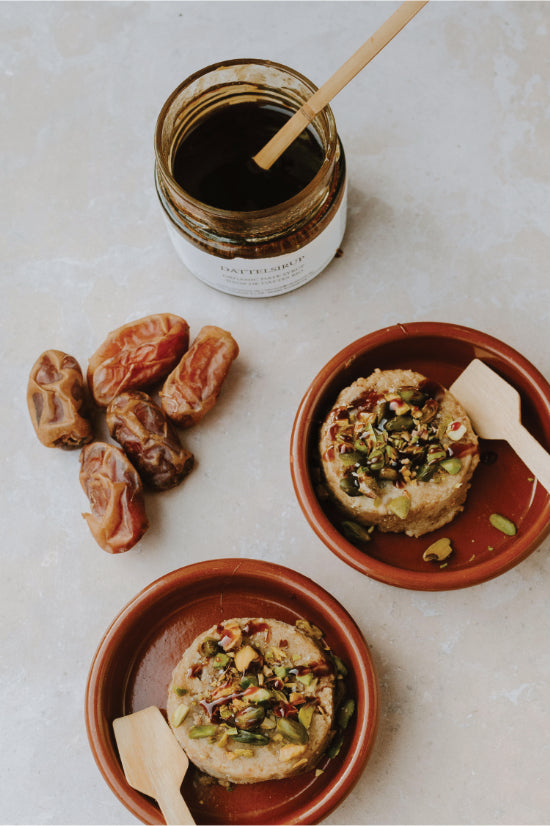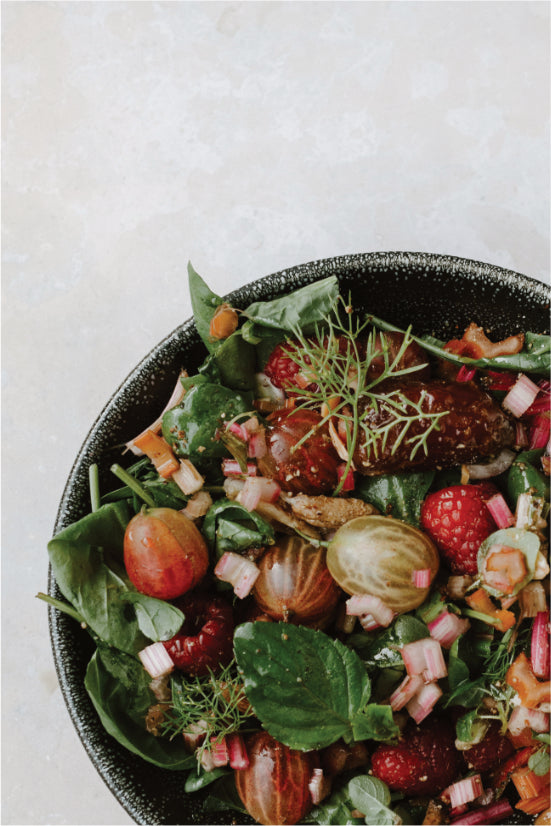Caponata is a classic from Sicilian cuisine. Sun-ripened eggplants usually play the main role in this summer vegetable symphony, which can be served as a warm main course or cold as an appetizer. Apart from this, as with any good classic, there are, of course, a multitude of variations and modifications of caponata that include different ingredients and ways of preparing it. While eggplant, which is first among the main ingredients, provides the buttery, soft texture of the dish, there are a few other ingredients that no caponata should be without: Tomatoes provide a fruity acidity, celery, briefly blanched, adds freshness and a crunchy bite, and onions, gently sauteed over low heat, bring a depth of flavor and subtle, caramel sweetness to the dish. In our caponata recipe, we also use capers and olives for salty, tart flavors, dates to add natural sweetness, and raw chocolate for an earthy note to the flavor. The result is what we consider to be an extremely successful version of the Italian classic, which tastes especially delicious with some crusty bread baked to a golden brown with a little olive oil.
Caponata: Sweet and sour from Sicily
The essence of the character of this Italian dish is the refreshing contrast of sourness and sweetness, which is also often used in Asian cuisine, for example. In this recipe, however, we do not need sugar for the sweetness, as is often the case with Asian sweet and sour. The subtle sweetness comes mainly from the long and slow steaming of the onions, which begin to caramelize over low heat. The more time you give the onions, the tastier and sweeter the result - even without sugar. The sweet note is also supported by the fruity, nutty sweetness of the Deglet Nour dates we use for this dish.
The tart note comes from the natural fruit acid in the tomato sauce, is in the capers and olives, and is further accentuated by deglazing with a little vinegar.
Raw cocoa: earthy flavors in caponata
One ingredient you probably won't find in many recipes for a Sicilian caponata is raw cacao. We find that the earthy, tart notes of chocolate add incredible charm to the dish. In addition, the subtle cocoa flavors harmonize beautifully with the sweetness of the dates and the slow, gently braised vegetables.
Caponata di Melanzane with dates and cocoa: Ingredients for the Italian dish
for 4 persons as main course, 6 persons as antipasto or side dish
- 500 g eggplants
- 8-10 tablespoons extra virgin olive oil
- 50 g pine nuts
- 300 g celery
- 100 g green olives
- 60 g capers or caper apples
- 2 vegetable onions
- 3-4 tablespoons of spiced tomato sauce
- 8 dates ( Deglet Nour variety)
- 100 ml white wine vinegar (or more, to taste)
- 40 g raw cocoa (alternatively dark chocolate with at least 85% cocoa)
- Sea salt
- Peperoncino
Preparation: This is how the Caponata recipe works
- Cut the eggplants first into slices, then into cubes of about 1 cm. Heat about 5-6 tablespoons of olive oil in a pan and fry the eggplant pieces over high heat. Reduce heat and fry until the flesh is soft and the outside is nicely browned. Add a little more oil if needed.
- In a non-stick pan, lightly toast the pine nuts and set aside. Wash and clean the celery and cut into half moons about 1 cm wide. Blanch in a pot full of boiling salted water for about 3 minutes until firm to the bite, be sure to rinse with ice cold water. Remove pit from olives and chop coarsely. Coarsely chop capers as well.
- Peel onion, cut into rings or dice and sauté in remaining oil over moderate heat. Add olives, capers, tomato sauce, pine nuts and dates cut into pieces and sauté briefly, then add the vinegar. Simmer for about 10 minutes. Mix in eggplant and simmer for another 5 minutes. Finally, mix in celery and chocolate until melted. Season to taste with salt and peperoncino.
A word about the tomato sauce
For simplicity's sake, we're using pre-seasoned tomato sauce for this recipe. However, if you prefer to use fresh tomatoes, perhaps because they are growing in your own garden, you can of course do so. In this case, we recommend using about 3-4 large, fleshy tomatoes, simmering the vegetables a few minutes longer, and adding a little additional seasoning of salt, pepper, basil, and garlic.
Sicilian caponata: tips for gourmets
Caponata can be served warm or lukewarm as a main course, with lightly toasted bread. But warm caponata is also delicious as a sauce with pasta. Cold, it can be served as an antipasto or as a side dish with fish or cheese. So it's worth cooking a little more of the caponata recipe and enjoying it in different combinations - hot and cold.


